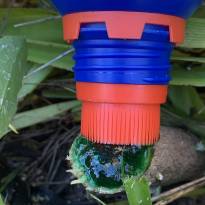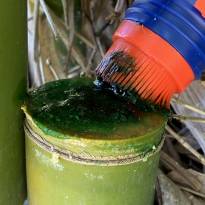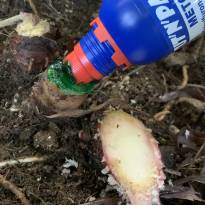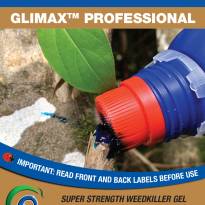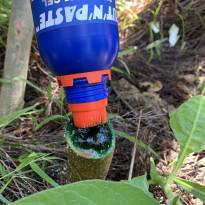The WHO’s cancer agency left in the dark over glyphosate evidence
June 14, 2017, 1:05 p.m. GMT
Previously unreported court documents reviewed by Reuters from an ongoing U.S. legal case against Monsanto show that Blair knew the unpublished research found no evidence of a link between glyphosate and cancer. In a sworn deposition given in March this year in connection with the case, Blair also said the data would have altered IARC’s analysis. He said it would have made it less likely that glyphosate would meet the agency’s criteria for being classed as “probably carcinogenic.”
The absence of the data from IARC’s assessment was important. IARC ended its meeting in 2015 by concluding that glyphosate is a “probable human carcinogen.” It based its finding on “limited evidence” of carcinogenicity in humans and “sufficient evidence” in experimental animals. It said, among other things, that there was a “positive association” between glyphosate and blood cancers called non-Hodgkin lymphoma. IARC told Reuters that, despite the existence of fresh data about glyphosate, it was sticking with its findings.
The unpublished research came from the Agricultural Health Study, a large and significant study, led by scientists at the U.S. National Cancer Institute, of agricultural workers and their families in the United States. Asked by Monsanto lawyers in March whether the unpublished data showed “no evidence of an association” between exposure to glyphosate and non-Hodgkin lymphoma, Blair replied: “Correct.”
Asked in the same deposition whether IARC’s review of glyphosate would have been different if the missing data had been included, Blair again said: “Correct.” Lawyers had put to him that the addition of the missing data would have “driven the meta-relative risk downward,” and Blair agreed.
Scott Partridge, Monsanto’s vice president of strategy, told Reuters the IARC glyphosate review “ignored multiple years of additional data from the largest and most comprehensive study on farmer exposure to pesticides and cancer.”
The Agricultural Health Study was particularly pertinent, he said, because it examined real-life human exposure to glyphosate, whereas much of the scientific research IARC analysed involved laboratory tests on rodents.
IARC told Reuters that its evaluations follow strict scientific criteria and that its carcinogen classification system “is recognised and used as a reference all around the world.” It reiterated that in the interests of transparency it considers only published data.
Reuters asked two independent statistical experts to review the data, which has still not been published, though the National Cancer Institute told Reuters researchers are currently working on an updated analysis of it. Neither of the two experts had seen the data before and both said they had no conflict of interest over glyphosate.
David Spiegelhalter, a professor of the Public Understanding of Risk at Britain’s University of Cambridge, said there was “no apparent scientific reason” for not publishing the data. Bob Tarone, a retired statistician who worked alongside Blair and others at the National Cancer Institute for 28 years before moving to the for-profit International Epidemiology Institute, said he could find “no ready explanation in terms of the available scientific evidence” for the data not to have been published.
NON-SELECTIVE HERBICIDE
Glyphosate is what’s known as a non-selective herbicide, meaning it kills most plants. Discovered by the Monsanto chemist John E. Franz in 1970, glyphosate is no longer under patent, is supplied by numerous companies and is now the world’s most widely used weedkiller, deployed in agriculture, forestry and domestic gardening. Monsanto and other companies have developed genetically engineered seeds that can tolerate glyphosate, allowing farmers to apply it to entire fields without destroying crops.
The safety of the chemical has been under scientific and regulatory scrutiny since the 1980s. The U.S. Environmental Protection Agency and other international bodies, including the European Food Safety Authority, Health Canada’s Pest Management Regulatory Agency, New Zealand’s Environmental Protection Authority and Japan’s Food Safety Commission, have kept it under regular review, and all say glyphosate is unlikely to cause cancer in humans.
But it is not settled science, and researchers across the world continue to study glyphosate – measuring traces of it in water and foods, exposing lab rats to it, and monitoring possible health effects in people who have used it year after year in their work.
One of the largest and most highly regarded studies to examine effects of pesticide use in real life is the Agricultural Health Study, a prospective investigation of about 89,000 agricultural workers, farmers and their families in Iowa and North Carolina. Since the early 1990s, it has gathered and analysed detailed information on the health of participants and their families, and their use of pesticides, including glyphosate.
AHS researchers have published numerous studies from their data. One paper looking at glyphosate and possible links with cancers was published in 2005. It concluded that “glyphosate exposure was not associated with cancer incidence overall.” Since then, more data has been collected, adding statistical power to subsequent AHS analyses.
After studying the draft papers, Tarone said the unpublished figures show “absolutely no evidence whatsoever” of an increased risk of non-Hodgkin lymphoma because of exposure to glyphosate.
Spiegelhalter told Reuters: “In the drafts I saw, none of the herbicides, including glyphosate, showed any evidence of a relation” with non-Hodgkin lymphoma. He noted that the study was statistically strong enough to show a relationship for other pesticides – so had there been any link to glyphosate, it should have shown up.
In his legal testimony, Blair also described the Agricultural Health Study as “powerful” and agreed the data showed no link.
The IARC review “ignored multiple years of additional data from the largest and most comprehensive study on farmer exposure to pesticides and cancer.”
Despite IARC’s modest size and budget, its monographs – assessments of whether something is a cause of cancer – often catch the eyes and ears of policymakers and the public. Recent IARC monographs have included judgments that red meat is carcinogenic and should be classified alongside arsenic and smoking, and that coffee, which IARC previously said might cause cancer, probably is not carcinogenic.
The agency takes a different approach to many other regulators in two important ways. First, it says it assesses “hazard” – the strength of evidence about whether a substance or activity can cause cancer in any way, whether in a laboratory experiment or elsewhere. It does not assess the “risk” or likelihood of a person getting cancer from everyday exposure to something. Second, in general it only considers research that has been published in peer-reviewed scientific journals.
IARC considered around 1,000 published studies in its evaluation of glyphosate. But only a handful of those were cohort studies in humans – the kind like the Agricultural Health Study and the most relevant to real-life situations such as people working with glyphosate in agriculture.
